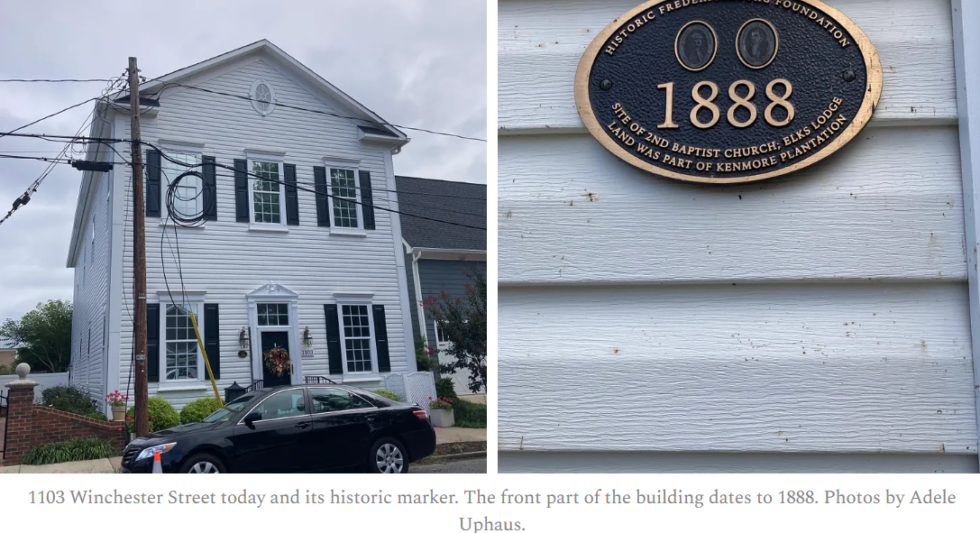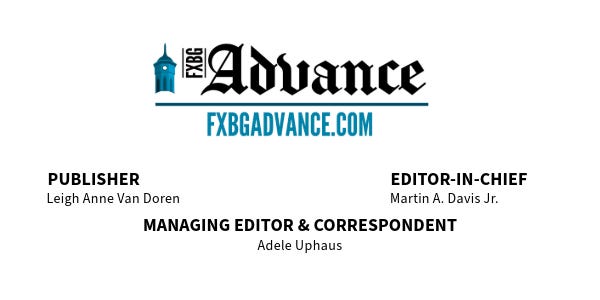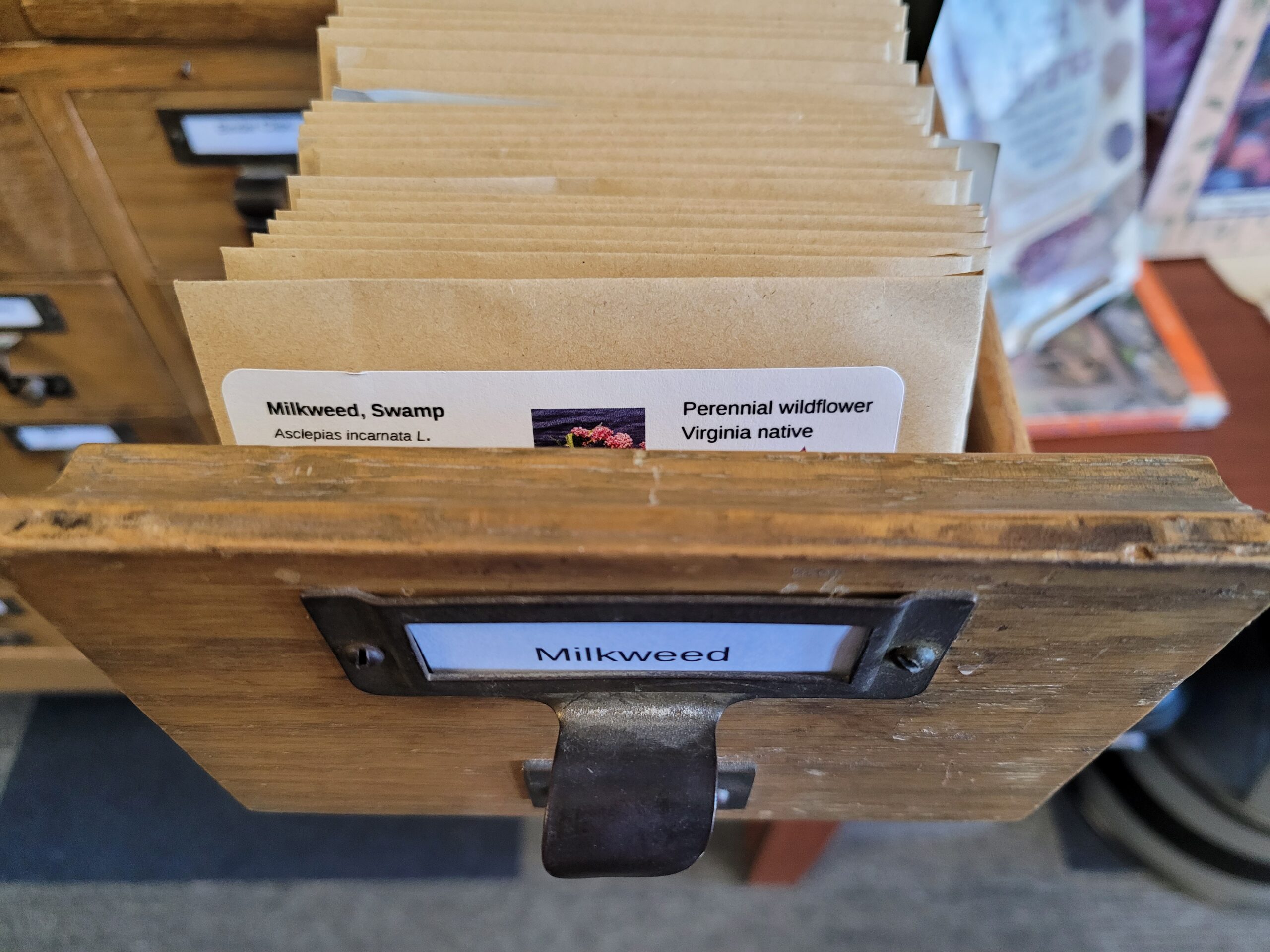
Building first housed a church and later was a community gathering place for Black citizens during segregation.
The building at 1103 Winchester Street has been an important gathering place for Black residents of the Fredericksburg area since the late 1800s—as a church, a “canteen” for “colored children,” and a USO site for Black soldiers during World War II.
According to research conducted in 2017 by Roger Engels for the Historic Fredericksburg Foundation’s marker program, the property was initially part of the Kenmore estate and was sold to George and Albert Ray, Black residents of the city, in 1874.
Albert Ray was a teacher in segregated schools in Fredericksburg and Falmouth and he ran for City Council in 1876. He was also a pastor and the leader of a group that split from Shiloh Baptist Church (Old Site) and formed Second Baptist Church in 1878.
He sold a strip of his property on Winchester Street to the church, which built a 28-by-36-foot structure that now forms the front part of the present-day house.
The church was never financially successful, however, and the building was sold in 1910 to Robert Harris, a grocer, and then in 1925 to the Improved Benevolent Protective Order of Elks of the World, often referred to as the “colored Elks,” according to the marker research.
The Elks used the building for their meetings, and it became a gathering place for other Black residents of the area during segregation. Black troops stationed at what was then Fort A.P. Hill during World War II gathered in the building for USO programming, and it hosted a “canteen” for Black youth from at least 1945.

In August of that year, the Free Lance-Star reported that Lorraine Ferguson was “crowned queen of the two colored playgrounds in the city” in a ceremony held at the “Winchester Street canteen.”
In February of 1950, the paper reported that the city’s Recreation Commission was looking for other buildings to be the canteen’s headquarters. Gladys Todd, who supervised the canteen, told the commission that the Elks building on Winchester Street was too cramped and that the ceilings were too low for basketball.
Seven years later, however, it seems that the canteen was still gathering at the Winchester Street building, according to Free Lance-Star articles about events held there.
The local Elks lodge stopped functioning in the 1990s and in 2007, the building was sold to James Jarrell and his wife as an investment, according to the marker research.
The Jarrells planned to tear down the structure, but discovered that it was in good condition, according to the research. They decided to convert the building to a dwelling.
More information about HFFI’s marker program, including what structures are eligible and how to apply, is at the organization’s website.




Local Obituaries
To view local obituaries or to send a note to family and loved ones, please visit our website at the link that follows.

Support Award-winning, Locally Focused Journalism

The FXBG Advance cuts through the talking points to deliver both incisive and informative news about the issues, people, and organizations that daily affect your life. And we do it in a multi-partisan format that has no equal in this region. Over the past month, our reporting was:
$8 a month supports great journalism
- First to report on a Spotsylvania School teacher arrested for bringing drugs onto campus.
- First to report on new facility fees leveled by MWHC on patient bills.
- First to detail controversial traffic numbers submitted by Stafford staff on the Buc-ee’s project
- Provided extensive coverage of the cellphone bans that are sweeping local school districts.
- And so much more, like Clay Jones, Drew Gallagher, Hank Silverberg, and more.
For just $8 a month, you can help support top-flight journalism that puts people over policies.
Your contributions 100% support our journalists.
Help us as we continue to grow!
Support FXBG Advance for $8 a month







